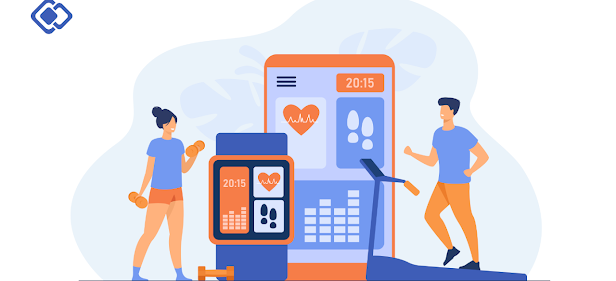Bring A Dynamic Interaction To Your Static Web Pages
Since the internet world is growing increasingly competitive, user experience can be the key to your success there. This is only one of the numerous reasons why Rich Internet Applications (RIA) are becoming more popular on the Internet. Rich Internet Technologies are fundamentally all about the web. Web Rich Internet Applications are still web applications even if they use different runtimes to operate outside of the browser.
They allow you to work from any computer. We can not take them down though. One must establish a good connection at all times. Like the web, the finest platforms for web Rich Internet Development are cross-platform. Online RIAs can improve the web model by enhancing the user experience with multimedia and real-time collaboration. This is precisely what gives Rich Internet Applications their strength and keeps them moving forward in the field of online applications.
WHAT IS A RICH INTERNET WEB APPLICATION?
A Web application development company making many of the same characteristics and visual elements as a desktop application is a Rich Internet Application (RIA). To offer a user application, an RIA needs a browser, a browser plug-in, or a virtual machine. The server manages data manipulation, while the client computer manages the user interface and associated object manipulation.
Installation on the client's PC is typically not necessary for an RIA. The installation of a platform, such as Adobe Flash, Java, or Microsoft Silverlight, is necessary for client machine functionality. If a required platform is missing, the RIA may ask the user to download and install it. Some RIAs work with a variety of Internet browsers, while others only work with a few. Typically, an RIA runs on a client machine's allotted desktop space, or "sandbox." The client machine's file system and OS are only partially visible and accessible due to the sandbox. Sandbox settings lessen RIA security flaws that are already present.
RIA CHARACTERISTICS
1. Direct interactivity:
In a conventional page-based Web application, there are only a few common controls available for user input: checkboxes, radio buttons, and form fields. This substantially hampers the development of compelling and functional applications. A wider variety of controls available through an RIA can increase productivity and improve user experience.
Users can interact with page elements directly in RIAs, for instance, using editing or drag-and-drop tools. Additionally, they have the ability to pan across a map or other image.
2. Partial page Updating:
Standard HTML-based Web pages load only once. Any modifications you make to a page must revert back to the server, which will make the necessary adjustments before sending the page to you again. With HTTP and HTML, there is no other method to accomplish this. Traditional Web-based apps force users to wait while the full page reloads due to network connectivity issues, processor constraints, and other concerns. Wait times can be excessive and irritating even with internet connections.
3. Offline use:
A web application development company builds RIA to keep its state locally on the client system when connectivity is down, it might still be viable to use it. Some conventional Web apps can now achieve that thanks to advancements in web standards.
4. Better feedback:
Because RIAs don't require refreshing when changing portions of a website, they may give users promptly, accurate feedback, real-time confirmation of actions and choices, and thorough error warnings.
5. Impact on performance
RIAs can frequently outperform traditional apps, depending on the application and network characteristics. Applications that process locally on the client to eliminate round trips to the server, in particular, are probably going to run considerably quicker.
Offloading this work to client computers can also enhance server performance. The drawback is that less powerful small, embedded, and mobile devices, which are becoming more prevalent, might not be able to run these apps.
COMMON RIA DEVELOPMENT SOFTWARES
For creating RIAs, there are numerous frameworks available. One of the most popular platforms in the past was Adobe Flash. Flash's use, however, has decreased over time due to the growing security risks associated with it:
1. JAVAFX
In 2008, Sun Microsystems released JavaFX 1.0. Developers designed it with the intention of maximizing the performance of current GPUs as well as its hardware acceleration capabilities. Support for animation, media, WebView, 3D, and CSS style was an extra benefit. Since JavaFX 2.0 was totally based on the Java API, developers could utilize it with the IDE.
2. ANGULARJS
The Google-maintained client-side JavaScript framework AngularJS is an established option for businesses looking to build RIAs that are responsive, maintainable, and modular. Although HTML5 and JavaScript can work well together to construct high-end online apps, specialists in AngularJS are aware that the resulting code can become extremely complex and expensive to maintain.
3. SILVERLIGHT BY MICROSOFT
Microsoft Silverlight is a potent tool for creating rich Internet applications (RIAs) that are not only interactive and engaging but also functional across a range of browsers, operating systems, and devices. This is a key tool for both the progressive web app development company and mobile app company.
Even though RIAs is unquestionably a positive step, there are still a number of difficulties that developers must overcome. For instance, there isn't agreement on standardization of the aspects of Rich Internet Applications. The freedoms that RIAs promise are the exact reason why businesses have started to experiment with them.


Comments
Post a Comment